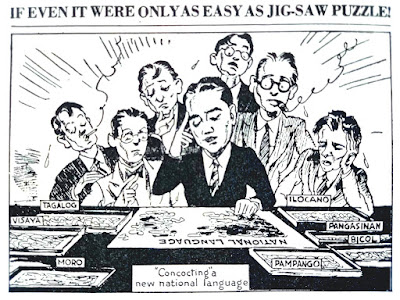continued...
In 1933, Ismael Amado, Alvah Johnson, Dr. Augusto Cortes and Martin Hopun of the China Banking Corporation founded the Philippine Chess Club. Aside from donating furniture and equipment, Cortes allowed free use of a roomy hall on the third floor of the Cortes-Ochoa Building, while Hopun shouldered the electric bills. Lara writes that the Philippine Chess Club succeeded in bringing about a “renaissance of Philippine Chess” by organizing annual meetings and regular club tournaments. The Philippine Chess Club held championships in Manila every year without fail from 1933 to 1941, the master’s tournament was held for the first time in the Philippines under the auspices of the Philippine Chess Club.
Lara avers that the Japanese military regime did not dampen the enthusiasm of Philippine woodpushers. Early in 1942, the Knights of Columbus held a club championship which Ramon H. Lopez won. Max Hoeflein, a 70-year-old Jewish refugee from Germany, captured the 1942 metropolitan championship. But Hoeflein was subsequently upset by young Ramon Lontoc in two exhibition games. The year 1943 is remembered for the protest filed by I. Nakajima, a Japanese accountant, who lost being apiece down to Ramon Lontoc in the metro tourney. The Nisei dropped out of the running after he was beaten by younger players Marcelo Gerardo and Vicente Barcenilla. Both the national and metro titles of 1943 were garnered by Antonio Arce.
With the return of the Americans to the Philippines in 1945, chess activity gained new energy. The YMCA held the first postwar chess competition at the Know Memorial Church, with around 30 American soldiers and Filipino players pitting their skills.
Meanwhile, the Philippine Chess Club was revived and renamed “Knights and Bishops”. Young Romualdo Aldecoa took over the presidency of the club because Ismael Amado had been executed by the Japanese in 1944 for helping the guerillas. The club staged a metro tournament, but closed down after Aldecoa left for the United States for medical treatment.
In February 1945, Horacio P. Tagle, Jose Crisanto, Marcelo Gerardo, Jose Lontoc, Florencio Campomanes, Vicente Barcenilla, Ramon Lopez and Jose Rocha formed the Manila Chess Club, setting its headquarters at Arlegui Street. Jesus Zabaljaregui of Tabacalera was elected the first president. The Manila Chess Club held the first postwar national chess tournament in 1946, after the Philippines were granted independence. At this time Julio V. Rocha, dean of architecture at the University of Santo Tomas, had succeeded Zabaljuaregui as president. The Manila Chess Club proposed a chess radio match via RCA to the Australian Chess Federation. The proposal was accepted by the Australians, who expressed the hope for many future contacts and the eventual holding of zonal and interzonal competitions to select a player to challenge the world champion. But the chess radio match never pushed through.
In 1952, Don Pio San Meliza, a lawyer-hacendero from Occidental Negros, was elected president of the Manila Chess Club. He organized a Philippine Open tournament in Bacolod City that year, with Manila players competing for the honors and cash prizes amounting to PhP 2,000, a princely sum in those days, and double the purse offered in the Rocha Congress in Manila in 1950. Glicero Badilles won the tournament and became known as the lion of Cebu.
Jose Pascual won the 1962 national championship which was jointly sponsored by the Manila Chess Club and the YMCA. After the match, a meeting was held at the YMCA resulting in the inauguration of the Philippine Chess Association and the election of Pascual as its first president. Senator Carlos P. Garcia, then already an avid and able chess player, was named adviser of the association.
Chess activity continued to grow but the big push came in 1955 with the founding of the Philippine Chess Federation upon the return of Florencio Campomanes from postgraduate studies in the United States.
One of the problems Campomanes recognized when he started pushing the sport in 1955 was that chess was not available to everyone. But the principle which guided him and that he firmly and strongly believed in was that nothing is impossible to do for chess. And so we began modern Philippine Chess history.
(To be continued)
* from 54th FIDE World Congress, Manila 1983(souvenir program)
Article: After Five Centuries: Philippines is Chess Country
by Aida Sevilla Mendoza
Wika Para sa Lahat
Magandang araw! Magandang hapon! Magandang gabi! If you understood any of the words or phrases I used, chances are that you know they come...

Looking for Something Here?
Tuesday, December 5, 2006
Subscribe to:
Post Comments (Atom)
Scholastic Basketball Camp
1st Founders' Cup
Scholastic Basketball Camp-1st Founders' Cup
16 & Under Division Ranking 2019
| School | Rank | Wins |
|---|---|---|
| SV Montessori | 4th | 0 |
| La Trinidad Academy | Champion | 5 |
| Charis Christian Institute | 2nd | 4 |
| La Camelle School | 3rd | 1 |
12 & Under Division Ranking 2019
| School | Rank | Wins |
|---|---|---|
| SV Montessori | 5th | 0 |
| La Trinidad Academy-Team A | Champion | 6 |
| Charis Christian Institute | 2nd | 5 |
| La Camelle School | 3rd | 4 |
| La Trinidad Academy-Team B | 4th | 1 |

No comments:
Post a Comment